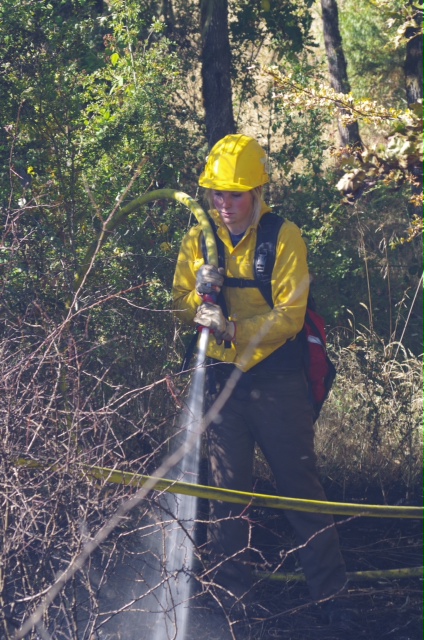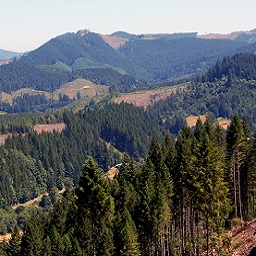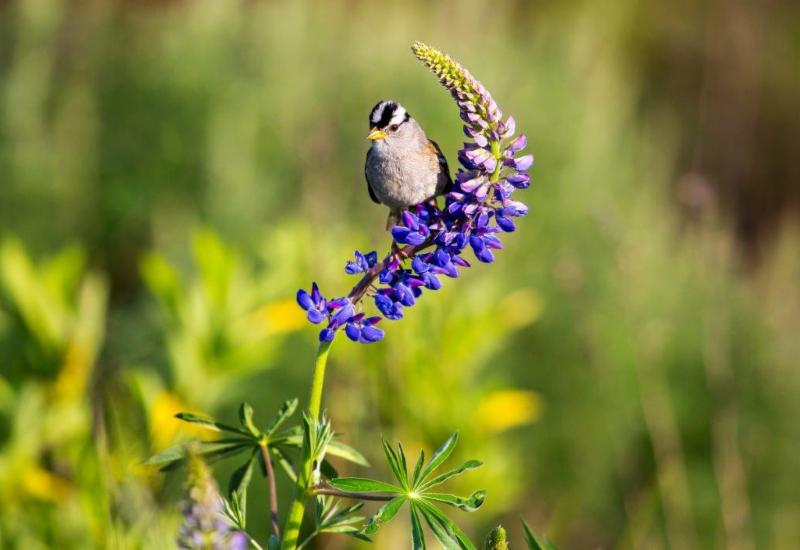|

|
|
|
ODF’s third consecutive severe season packs a wallop
|
|

|
|
In August, a firefighter extinguishes hot spots on the Ben More Lane Fire 7 miles northeast of Oakland. WIthout prompt initial attack the fast-moving fire could have easily exceeded 100 acres. Photo by Kyle Reed, DFPA
|
At a mid-August press conference in Oregon, U.S. Forest Service Chief Tom Tidwell characterized the high wildfire activity in the West as “the new normal.” His words rang true for Oregonians, who were enduring their third severe fire season in a row.
The story of the 2015 wildfire season in Oregon and the Pacific Northwest perhaps is best told by the statistics.
Here’s a snapshot on Sept. 11:
- 577,000 acres burned in Oregon; 994,000 acres burned in Washington
- Nearly 2,000 fires in Oregon, and 1,500 in Washington
- Largest fires: 110,000-acre Canyon Creek Complex in Oregon; 211,000-acre North Star Fire in Washington
- Incident management teams deployed 46 times in the region
- Firefighting costs of $464 million ($211 million in Oregon; $253 million in Washington)
- Some 10,900 fire personnel deployed at the peak of activity
Large fire activity began early with the 4,740-acre Sugarloaf Fire June 27, and showed little sign of slowing down by mid-September when the Dry Gulch Fire scorched 17,000 acres in just three days. The wildfires took an enormous toll on developments as well, destroying 62 homes and numerous other structures.
|
|
Oregon’s Board of Forestry revisits streamside buffers
|
|
|
  Streamside, or riparian, buffer rules ensure Oregon’s streams are cool and provide a blueprint for where to leave trees during a timber harvest. Existing since the 1980s, these rules were revised in the 1990s to further protect water quality. Streamside, or riparian, buffer rules ensure Oregon’s streams are cool and provide a blueprint for where to leave trees during a timber harvest. Existing since the 1980s, these rules were revised in the 1990s to further protect water quality.
In 2002 through monitoring, the Oregon Department of Forestry (ODF) and Department of Environmental Quality (DEQ) analyzed Forest Practices Act (FPA) streamside shade buffer rules to assess alignment with the federal Clean Water Act. The research showed that following FPA rules didn’t meet the protecting cold water (PCW) standard, which directs that human activity should not raise stream temperature more than ½ degree Fahrenheit where salmon, steelhead and bull trout are present.
In July, Board members discussed their conceptual visions about what new streamside buffer rules should include to address complex legal, scientific, and social values. To capture the many interests expressed in a meaningful way, the Board established a subcommittee to develop proposals for the full Board to consider in November. The subcommittee agreed that temperature should be the lens through which it views the rulemaking proposal process to maintain a strong connection to the water quality standard in question.
Upcoming Board of Forestry consideration will include monitoring and assessing the rules for their effectiveness in meeting the PCW standard, as well as consideration of equity relief for both forestland owners with smaller parcels, and small woodland owners.
|
|
Young forests critical to songbirds
|
|
|

|
|
A white-crowned sparrow perches atop lupine.
Photo courtesy Matthew R. Olson
|
Early seral-dependent songbirds like the rufous hummingbird and orange-crowned warbler have been declining in Oregon. According to research, this is due in part to the emphasis on late-successional and old-growth management goals on federal forestlands. Estimates indicate a decline of as much as 50 percent in early-seral forests since the 19th and early 20th centuries.
The Oregon Forests Research Institute (OFRI) has a new publication about songbirds in their Wildlife in Managed Forests series. The new publication, “Early Seral-Associated Songbirds,” outlines science-based recommendations to maintain songbird habitat including strategies to provide habitat for early seral-associated songbirds while still growing timber to meet society’s wood products demands.
Recommendations for landowners seeking to help promote songbird habitat include maintaining some shrubs and hardwood trees and keeping large-diameter down logs on-site.
The new publication is available here.
|
|
Check out our new website!
|
|
|
We have a new website! Our new look is clean, modern, and offers quick access for our most popular services.
|
|
|
|

|
|